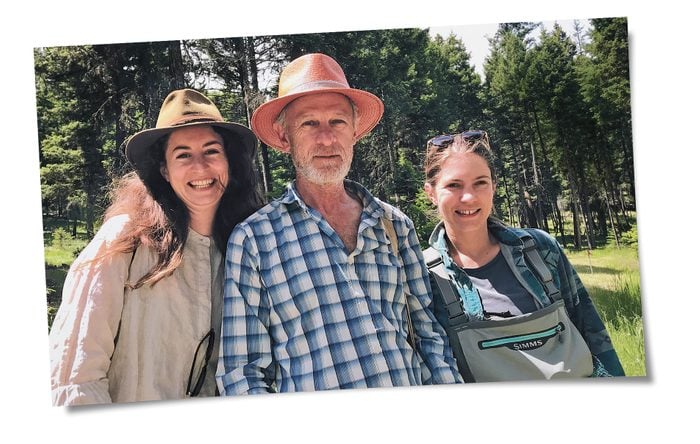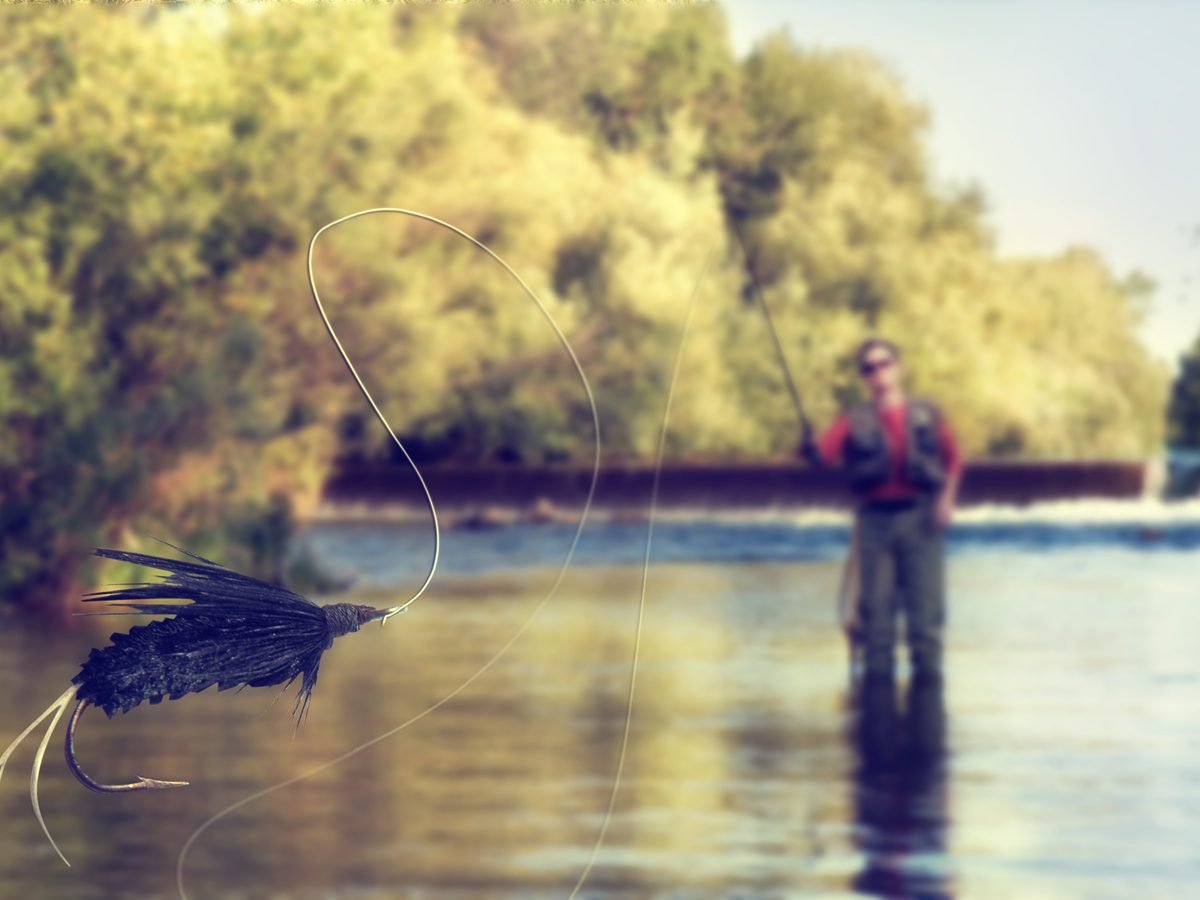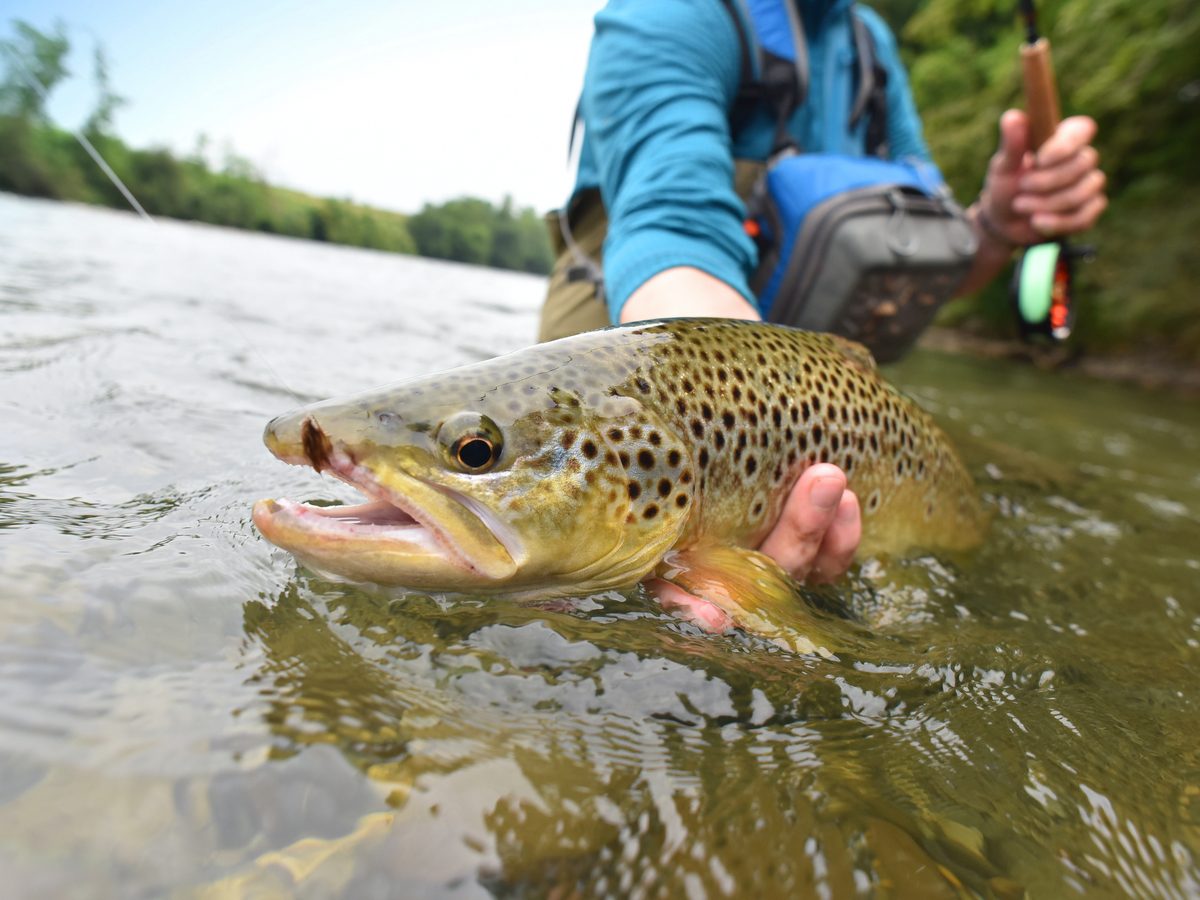How Fly Fishing With My Daughters Brings Us Together

Teaching my daughters how to fly fish was also a lesson in the way that everything in nature is connected.
When my daughters were growing up, my partner, Maggie, and I took them camping every summer. It was the late 1990s, and we’d pitch our tent on British Columbia’s lakeshores and beside rivers, where I introduced them to one of the great passions in my life, fly-fishing.
Before I taught Emma and Claire how to cast, I showed them how to lie on a dock and peer through the cracks to see trout swimming below. I helped them turn over rocks on the lakeshore to find larvae of caddisflies, wandering aquatic insects that carry on their backs intricate homes made of tiny sticks or stones. I taught the girls that adult caddisflies look like small moths and that when they skitter over the surface to lay their eggs, trout chase them, striking with abandon. This changed the way they looked at lakes.
One time, when Emma was about eight and Claire just four, I showed them dragonfly nymphs clambering up the stems of bulrushes to shed their shells. “When you see dragonflies zooming about over the lake, you know there will be nymphs underwater nearby,” I said, referring to the aquatic, larval stage of the insects. “Trout love to feed on them.” I took a newly emerged adult dragonfly off a bulrush and brought it into the canoe.
“They look fierce, but they won’t bite if you don’t hold them roughly,” I said as Claire watched the insect resting on the gunwale, testing its new wings. Tentatively she laid her hand down and waited while it clambered onto her fingers. With its wings gingerly unfolding, its ferocious mandible gasping harmlessly, it gently clasped her skin with tiny, clinging feet. She held it in front of her face, turning it in the light. Emma found one, too, and it sparkled blue.
All of this was as important as the fishing, which at first the girls did just by holding the rod while letting the fly troll slowly behind the boat. And in fact, later, they chose dragonfly nymph fly patterns from my fly box and we slowly fished over weedbeds, the girls alert for a strike because they knew the fish and the insects were interwoven in the water.
One day, the three of us stopped fishing on a lake when the girls spotted a gosling—a fuzzy, recently hatched Canada goose—flopping on a grassy point nearby.
“It’s in trouble,” said Claire.
We went ashore and saw that it was tangled in fishing line that a careless angler had discarded. I threw my jacket over the struggling bird and held it while the girls, tender and determined, unwound the monofilament from its wings and legs. When they released the gosling it ran across the water, splashing its small, downy wings to gain traction, racing to rejoin the flock waiting just offshore in a nervous gaggle.
The adult geese craned their long necks and called urgently as the gosling dashed toward them. Emma and Claire cheered. Then the girls went along the shore, picking up all the bits of lost fishing line they could find so it couldn’t trap any more birds.

Casting Lessons
Later that same year, I decided Emma was big enough to wield a nine-foot fly rod, and so it was time for her to take the next step and learn how to cast. Of all the ways to cast a line, the fly-fishing cast is the most complicated, obfuscating and elegant. The mechanics of a functional cast are simple enough, but a good one takes exact timing, and getting it right takes practice. Done well, a cast is effortless, meditative; the line is propelled across the sky and the weightless fly, alive with movement and light, falls like a single drop of rain. Done poorly, a cast ends in a jumble of line and a frustrating tangle.
At first, Emma watched me demonstrate the movement on the grass. In place of a fly, I tied a small piece of white cloth on the end of the line so she couldn’t hook herself.
“Imagine you are standing with your back to a barn door,” I told her, repeating a lesson I’d read in a book when I was learning the technique. “Drive your rod up on the back cast, but don’t let it hit the barn door. Turn your head to watch the line unfold, and the moment it straightens out behind you, throw it forward.”
She watched me cast, thought about it for a moment, then began lifting the rod and throwing the line. She looked back, to keep the rod tip from hitting the barn door.
I tossed Emma’s orange baseball hat out on the grass and told her to try to hit it. The casting motion became automatic as she concentrated on the target, and soon the little white tag was darting back and forth and drifting down like a mayfly to land near the cap.
“If you can cast like that with this heavy, old fibreglass rod of mine, you will be deadly when you get a new, light rod,” I said.
After she had mastered the cast with the antiquated Hardy rod I’d had since I was a teenager, I trusted her with my much lighter, and expensive, Sage, made of graphite.
Several weeks after that first lesson, Emma broke into a smile when she cast with the new rod, which uncoiled with a snap, accelerating the line in a way she hadn’t imagined.
“Oh, that casts nice!” she said, standing in the boat and shooting the line over the water. We were on Tunkwa Lake, near Kamloops, B.C., with trout swirling on the surface as they chased caddisflies. Emma aimed her casts toward the ripples on the surface, and after an hour of trying, finally connected with a rainbow trout that jumped in the air with her fly in its mouth. She let out a whoop, and I knew then that I would give her that rod one day, when the time was right. I think she knew that, too.
A gifted rod is a wonderful thing to have, because a fly rod is as much a talisman as it is a tool. When you fish with it, you fish with the love of whoever gave it to you. It becomes infused with memories of the waters you fish and the big trout and salmon you encounter. Sometimes just holding a rod can bring those memories alive and make you want to go fishing.

Forest Filled With Joy
A few years later, I taught Claire to fly fish in the same way. Then one summer day I took them both to the Skagit River, a few hours out of Vancouver. There, for the first time, I let them cast with a treasured bamboo rod that had been made by an old friend, Peter, and given to me as a birthday present by Maggie.
That rod was so light in their hands and it cast so beautifully. Walking back to the truck at the end of the day, Emma carried the graphite rod she’d learned to use on Tunkwa Lake, and Claire carried the tiny bamboo rod, which balanced so perfectly in her small hands. I had them walk in front, in case a cougar came from behind, and as we walked the girls sang songs, whistled and shouted to anything that might be on the trail ahead.
“Hey, bear!” they called every now and then.
They only caught a few fish that day, but that was enough, and they were passing through the forest filled with joy as the voice of the river nearby sang with them. I realized then that one of the greatest things fly-fishing had given me was a deep, quiet connection with my daughters through a shared love of nature.
Mark Hume’s book, Reading the Water: Fly Fishing, Fatherhood and Finding Strength in Nature, was published in May 2022.
Next, read the heartwarming story of how one man reconnected with his father through email.






